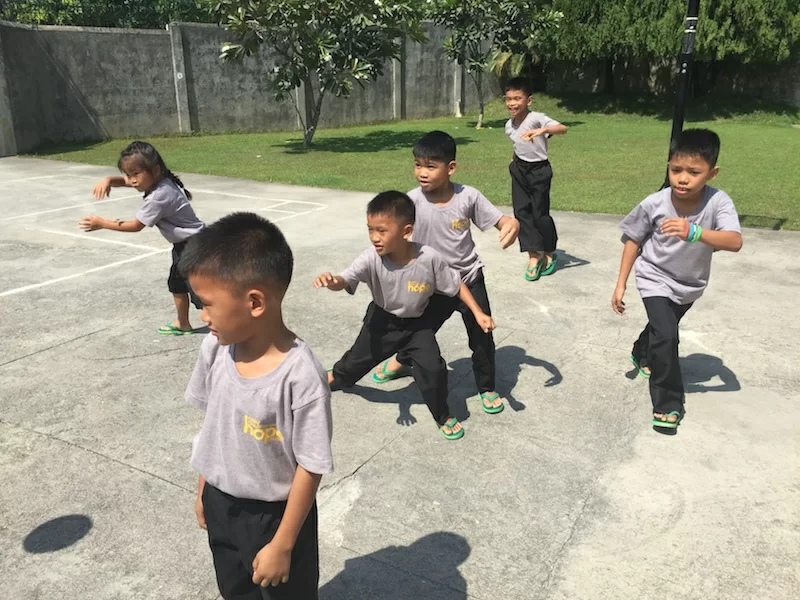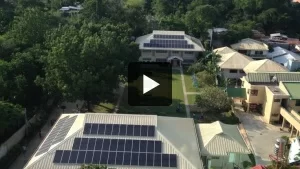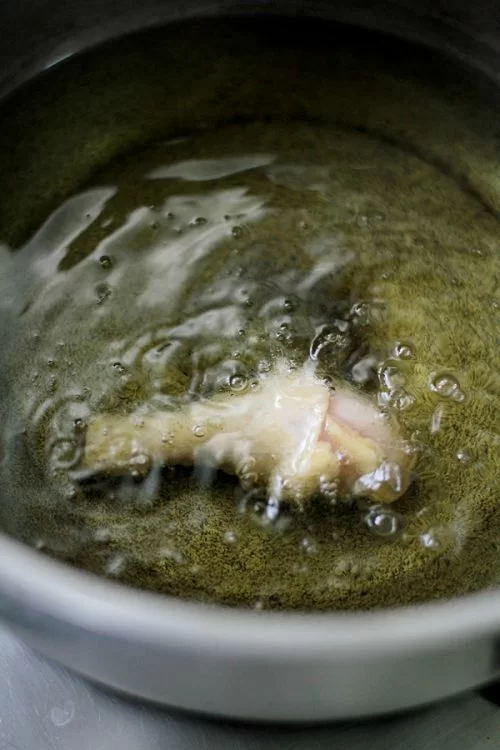
When we lived in the Philippines, I was really surprised to find out how much Filipinos love fried chicken.
Fried chicken is EVERYWHERE - at all restaurants and fast food places and even sold by vendors from little carts on the street. CSC is no exception! Fried chicken is a hit with all the kids.
This picture just cracks me up: it's the big plastic bucket where the aunties marinate the chicken. It's labeled "Monday".

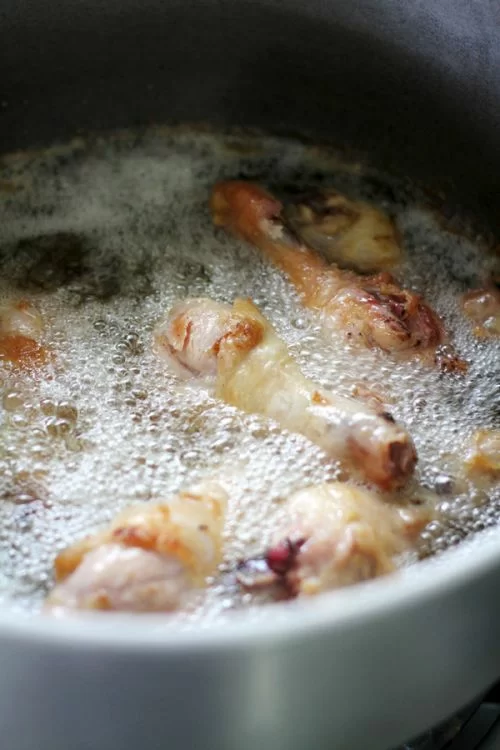
After you marinate the chicken, you put it into a pan of hot oil. Auntie Elvira kept the heat really low to cook the chicken long and slow. I was also really interested to find out that they weren't putting any breading on the chicken. The marinating and the crispy skin are enough to flavor the chicken after it's been fried.
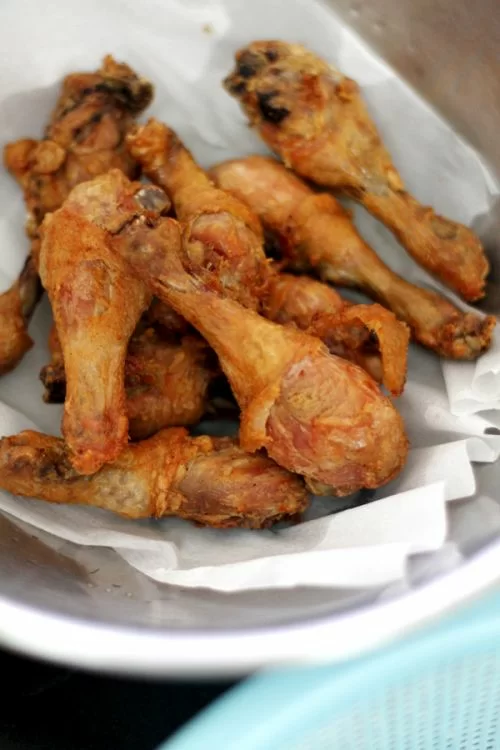
Fried Chicken
Recipe from the Cherne house
2 lb. chicken drumsticks
1-2 teaspoon minced garlic
1-2 teaspoon minced onion
1 tablespoon oyster sauce
1 teaspoon black pepper
1 teaspoon salt
1 tablespoon seasoning mix*
1 egg
1 tablespoon cornstarch
1-2 cups oil for frying
1.
Place the raw chicken in a large bowl. Add the garlic, onion, oyster
sauce, black pepper, salt, seasoning mix, egg, and cornstarch. Stir
until the chicken is evenly coated.
2. Heat oil in a large pot over
medium heat. When the oil is hot, place the chicken in the oil. The oil
should cover the chicken pieces almost completely and it will bubble
gently as the chicken cooks. Continue to fry the chicken until the skin
is golden brown and crispy. The amount of time you’ll need depends on
the temperature of the oil. Auntie Elvira keeps the heat low and fries
each piece for at least 15 minutes.
3. Remove from the oil and set on paper towels to drain excess oil.
*The seasoning mix that they use is called Magic Sarap and it basically adds a very salty flavor. You could use any kind of seasoning salt you like to give the chicken more flavor.
Growing Artists
"Everybody born comes from the Creator trailing wisps of glory. We come from the Creator with creativity. I think that each one of us is born with creativity."
– Maya Angelou
"Every artist was first an amateur." – Ralph Waldo Emerson
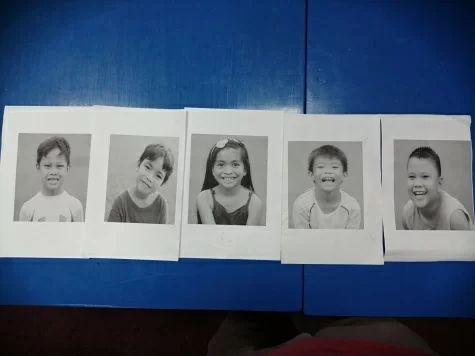 Every Monday afternoon my second grade class has art. My students get so excited upon hearing the bell and say, "It's art time!" Here is a conversation I recently had in art class:
Every Monday afternoon my second grade class has art. My students get so excited upon hearing the bell and say, "It's art time!" Here is a conversation I recently had in art class:
Student 1: "Teacher, what are we going to do today in art?
Student 2: "Teacher, are we going to paint or draw?
I took out pictures I had taken of each student.
Student 3: "What are we going to do with those pictures?"
Student 1: I think we are going to put frames around them or make designs on our own pictures.
Student 2: Nope, I think we are going to draw a picture of ourselves!
Student 3: Yeah! Ganahan kaayo ko magdrawing! (I really like to draw!)
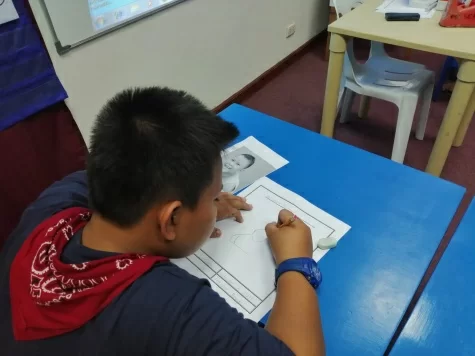 My 2nd graders have been learning the basics about art such as the different kinds of lines, colors, proper strokes in coloring, etc. Now, it was time to apply those skills!
My 2nd graders have been learning the basics about art such as the different kinds of lines, colors, proper strokes in coloring, etc. Now, it was time to apply those skills!
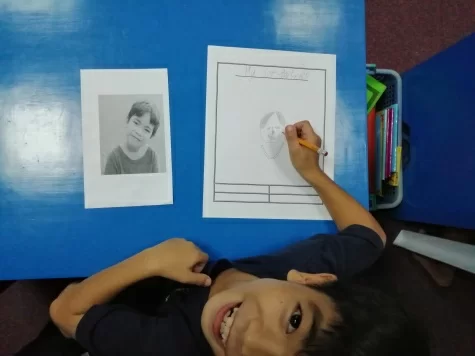 They really had fun doing their self-portraits. The room was totally quiet as they studied how best to recreate their picture. This activity encouraged them to develop concentration, coordination, fine-motor skills, and creativity. Some of them even extended their art skills by creating their own style.
They really had fun doing their self-portraits. The room was totally quiet as they studied how best to recreate their picture. This activity encouraged them to develop concentration, coordination, fine-motor skills, and creativity. Some of them even extended their art skills by creating their own style.
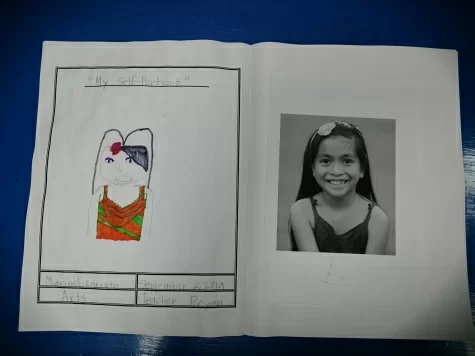
You Are Capable!
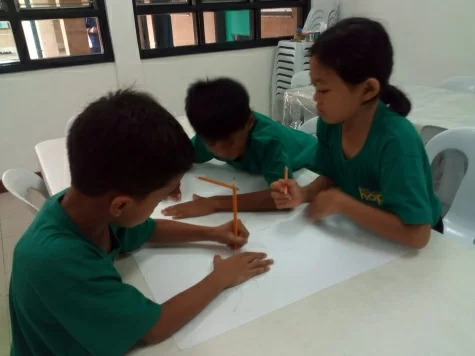 The beginning of this school year has been so great. Students are learning to adjust in their new classrooms, with their new teachers. There are a lot of new things at school that both the students and teachers are exploring together. It's fun to see everyone growing in so many different areas!
The beginning of this school year has been so great. Students are learning to adjust in their new classrooms, with their new teachers. There are a lot of new things at school that both the students and teachers are exploring together. It's fun to see everyone growing in so many different areas!
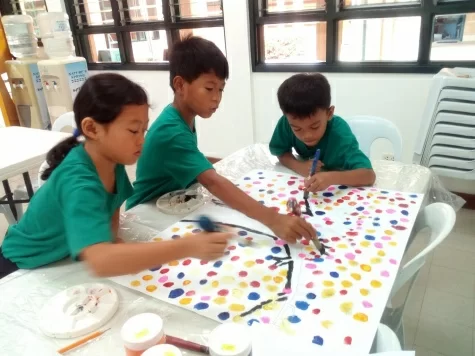 One of the big truths that we teach our students is that they're capable of doing the right things that will help them both now and in the future. A verse that we have been discussing in class is Philippians 4:13 which says, "I can do all things through Him who gives me strength".
One of the big truths that we teach our students is that they're capable of doing the right things that will help them both now and in the future. A verse that we have been discussing in class is Philippians 4:13 which says, "I can do all things through Him who gives me strength".
 At the beginning of each day my class and I review our classroom expectations. Instead of putting "Classroom Rules" I decided to put "I Can" statements as the heading. It's my way of encouraging the students to know that they are capable.
At the beginning of each day my class and I review our classroom expectations. Instead of putting "Classroom Rules" I decided to put "I Can" statements as the heading. It's my way of encouraging the students to know that they are capable.
It's very timely that the first theme in reading this year talks about teamwork. Once my students learned that they were capable of making good choices each day we then discussed how they are capable of working together as a team. Being part of a team simply means Together Everyone Achieves More. Reminding my students that they're capable indeed is so helpful for them.
A View from Above
Here is a bird's eye view of CSC The lot between the shelter and the Children of Hope School is one that we have been looking at and praying about for several years. It will take a miracle for CSC to get that middle lot, but because the owner doesn't seem to be sure she wants to sell and the price that she hinted at is really high. So we pray and dream and pray some more. Please join us in the praying and the dreaming if you want to!
A Great Day In Science
In our science curriculum, before we formally discuss the main topic, students participate in a science investigation activity. Our third main topic dealt with the different inquiry skills scientists use to help them gather information.
To make it more exciting for my students and to give them something to look forward to, I announced to my class two days before the actual "activity day" that we would be doing a science investigation.
On that day, as I entered in the classroom, I found my students patiently waiting and I could sense that they were all excited for the science activity. The activity was entitled "Measure Up!" Measuring is one of the inquiry skills used by scientists and the objective of this activity was for students to be able to practice using a ruler or a tape measure to find the length and compare objects by length.
The students were grouped into pairs and these were the steps they followed:
1. Measure a desk inside the classroom.
2. Look for an object inside the classroom which is longer than the desk you first measured (the first group chose to measure a bookshelf for their longer object while the second group chose to measure the whiteboard).
3. Look for another object inside the classroom which is shorter than the desk you first measured (the first group chose to measure a book for their shorter object while the second group chose a pencil holder).
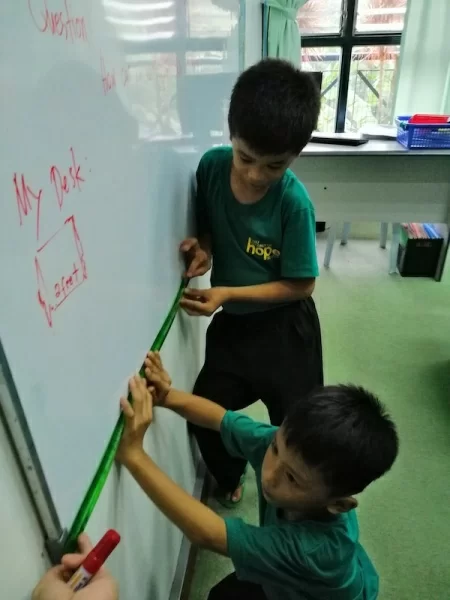 Collaborative learning was being developed and practiced by each student as they took turns in performing the science activity. The most surprising and rewarding part for me was when they confidently shared their results. Group one shared that the book measured 1 foot and concluded that it was shorter than the desk. The desk measured 2 feet. The bookshelf was the longest with a measurement of almost 6 feet.
Collaborative learning was being developed and practiced by each student as they took turns in performing the science activity. The most surprising and rewarding part for me was when they confidently shared their results. Group one shared that the book measured 1 foot and concluded that it was shorter than the desk. The desk measured 2 feet. The bookshelf was the longest with a measurement of almost 6 feet.
Another inquiry skill that they used during the activity was communication. In communicating, students needed to record their results through writing and drawing. At the end of the investigation they discovered that the inquiry skill "measure" helped them find and compare the lengths of objects.
After the excitement from this activity I am more motivated to plan for other activities that help the students become more independent (and excited!) in their learning.
Learning Through Play
Play is not a break from learning. It is endless, delightful, deep, engaging practical learning. It is the doorway to the child's heart. – Vince Gowman
Our children don't need more things. They need our time and desire to be with them in their world of play and fun. When kids play, they make memories.
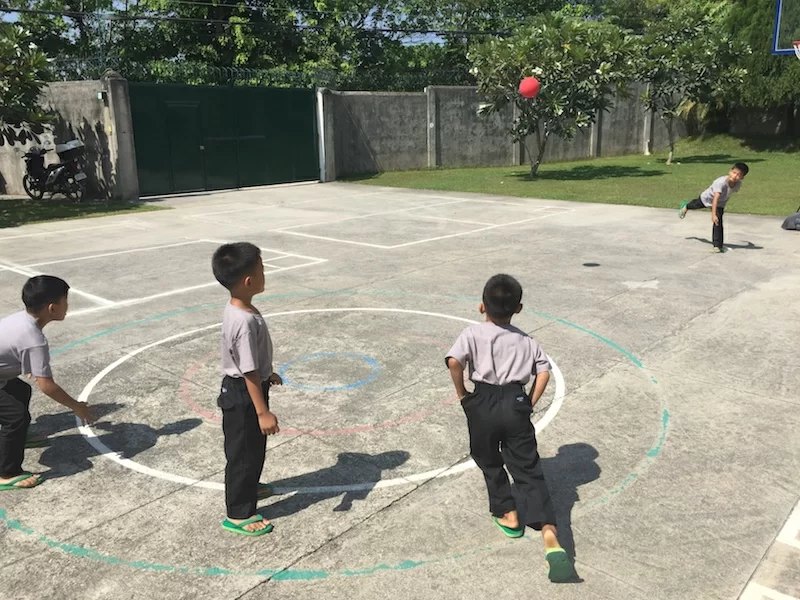
Every day after morning snack time the kindergarten and first grade students go outside to have playtime. It is the most exciting part of their day. It is the time they can run, laugh, and mingle with peers.
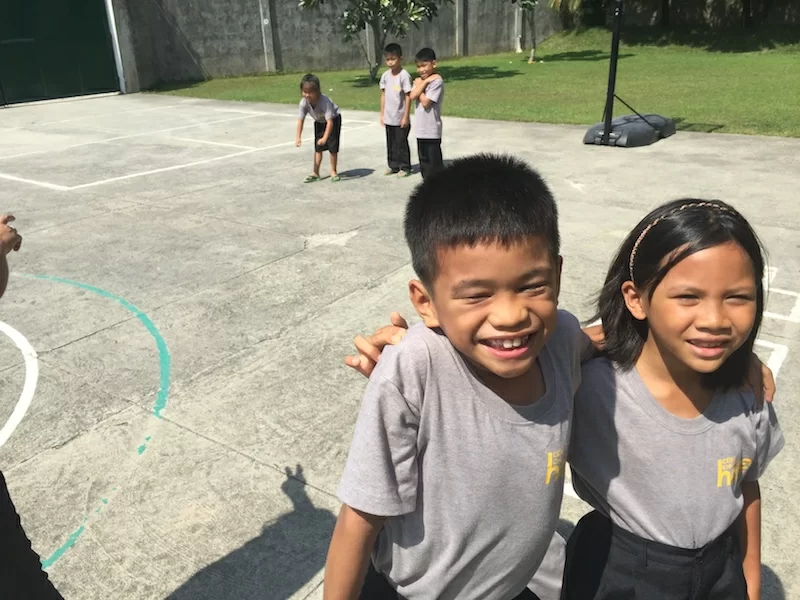
Here are some of the student's ideas about playtime. (What is playtime?)
Child 1: Playtime is about being kind to my friends and it makes my body healthy.
Child 2: Playtime is working because my body is moving.
Child 3: Playtime is a time to laugh and shout.
Child 4: I like playtime because there are lots of toys to play with.
Child 5: Playtime is a fun time with friends.
Child 6: In playtime I can play basketball, kickball, and lots of other fun games.
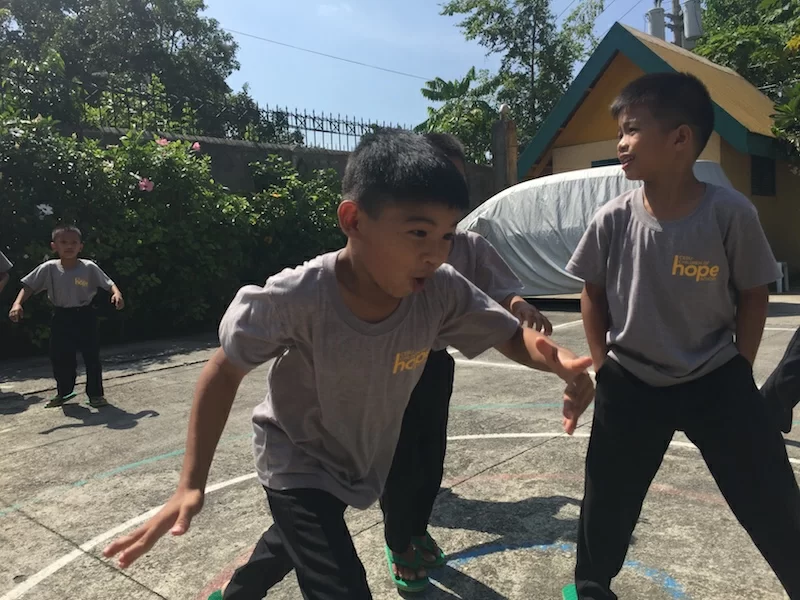
Playing and learning are connected. My students love their morning playtime. When we go back to our classroom, I see my students be more engaged in the lessons and kind to their classmates. Plus, when we are outside playing, they are learning many life lessons such as how to work together as a team, how to manage their emotions, and how to help others if someone gets hurt.
